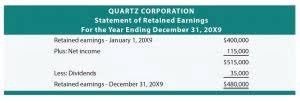
This is because the types of financial documents both businesses and governments require cannot be created without the details that a double entry system bookkeeping provides. These documents will allow for financial comparisons to previous years, help a company to better manage its expenses, and allow it to strategize for the future. A double entry system is considered complex and is employed by accountants or CPAs (Certified Public Accountants). The information they enter needs to be recorded in an easy to understand way. This is why a T account structure is used, to clearly mark the separation between “debits” and “credits”. A T account ledger is an informal way of addressing a double-entry bookkeeping system.
Entrepreneurs and Small Business Owners
- Since most accounts will be affected by multiple journal entries and transactions, there are usually several numbers in both the debit and credit columns.
- To pay the rent, I’ve used cash, so my bank account (an asset account) is credited by £2000.
- Your debits go on the left, credits on the right side and the line down the middle separates them.
- For more examples and applications, explore our sections on journal entry and t accounts.
- T accounts are a visual representation of an account in double-entry bookkeeping.
- Before the days of accounting software, bookkeepers and accountants actually kept physical books, and each ledger was a separate physical book.
T-accounts are used to track individual account balances and transactions, while trial balance summaries are used to ensure the overall accuracy of a company’s financial records. A T-account is used to track specific transactions, while the balance sheet is a summary of a company’s overall financial position. Both statements are important tools in accounting and finance, and they are used Certified Bookkeeper to help stakeholders understand a company’s financial health. The key financial reports, your cash flow, profit & loss and balance sheet are an organised representation of these fundamental accounting records.
- We’re going to look at T accounts but before that, let’s lay out some of the terminologies you might come across so you can grasp T accounts better.
- By displaying multiple transactions over a time period rather than a single transaction, it allows people to see a picture of a company’s activities.
- For instance, auditors often rely on historical transaction records and documentation to validate financial statements during financial audits or regulatory inspections.
- Debits are always posted on the left side of the t account while credits are always posted on the right side.
- If you want to review debits and credits, see the lesson on debits and credits.
- A balance sheet is a summary of a company’s financial position at a given point in time.
Ask Any Financial Question

We’ve been developing and improving our software for over 20 years! Thousands of people have transformed the way they plan their business through our ground-breaking financial forecasting software. Every month £2000 is credited from this account, reducing the asset as I make use of the property. If that’s not the case, make sure to double-check your books as you’ve probably made an accounting error along the way. This feature allows you to focus on specific dimensions and gain insightful knowledge regarding the financial health of your business.
Income Statement Impact
A surprising number of people uses these handy tools, and understanding their purpose can be a game-changer for your financial literacy. However, T-accounts lack seamless integration with these technological advancements, constraining their utility in a digital age. Businesses relying solely on T-accounts may struggle to leverage the full potential of accounting software, missing out on efficiency gains and analytical capabilities. Ever stared at a page filled with capital T’s and wondered what secret language accountants were using? My financial literacy journey started with a healthy dose of confusion around these mysterious T accounts.

What is the purpose of T accounts?
- In this section, I’m going to go through different types of transactions, and I’ll be using T-accounts to display the movement of value through the business.
- T-accounts, primarily designed for cash-based transactions, may not adequately accommodate accrual accounting principles.
- T-accounts alone may obscure vital details, such as foreign exchange gains or losses, derivatives, and intercompany transactions.
- Let’s check out some practical examples to put all of these accounting principles and T account rules into action.
- Okay, for the first transaction, there will need to be a credit to the Cash T account for $300 and a debit to an equipment T account for $300.
- A double entry system is considered complex and is employed by accountants or CPAs (Certified Public Accountants).
The purpose of journalizing is to record the change in the accounting equation caused by a business event. Ledger accounts categorize these changes or debits and credits into specific accounts, so management can have useful information for budgeting and performance purposes. Below is the T-account for Cash for the transactions and events of Xao Corporation.
Since so many transactions are posted at once, it can be difficult post them all. In order to keep track of transactions, I like to number each journal entry as its debit and credit is added to the T-accounts. This way you can trace each balance back to the journal entry in the general journal if you have any questions later in the accounting cycle.
Inadequate for Accrual Accounting

On the top, the name of the ledger is mentioned, t accounts the left side is for debit entries, and the right side is for credit entries within the ledger. It is essentially a visual or graphical representation of the company’s accounts which can be used to present, scrutinize, or review. It can be used to balance books by adding all transactions in a set of accounts so the total debits equal the total credits for each account. At the end of an accounting period, revenue and expense accounts are closed to the Retained Earnings or Owner’s Equity account.
